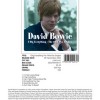I finally finished “No Regrets”, Ace Frehley’s account of his time in KISS, on the District Line this morning. Although it didn’t really spill any particularly surprising beans over its 299 pages – even if it does include a colour photo of what purports to be Rush’s Alex Lifeson with a bag on his head – it was entertaining enough to inspire me to dig out my KISS CDs. No slouches when it came to their release schedule, KISS issued four hit studio albums and a double live LP in a little over two years. Closer examination reveals that these albums, though crammed with classics, were often rarely over 32 or 33 minutes in duration. In the pre-digital age, bands could release albums as short as 28 minutes, but as long as they had around 5 or 6 songs per side, that was enough material to constitute an album. Slayer claimed that there was just as much music on their 1986, 28 minute long “Reign In Blood” opus as any of their other LPs, it’s just by the time they’d come to record this one, the songs were so much faster, resulting in less than half an hour of music. When launched in 1982, did Sony vice-president Norio Ohga’s suggestion to extend the capacity of the compact disc to 74+ minutes in order to accommodate Beethoven’s Symphony No. 9, foresee every future album release potentially being essentially a “double length” album? Often, double albums were not fully understood or appreciated upon their initial release (The White Album, Exile On Main Street) as four whole sides of vinyl is quite a lot for a music journalist to take in and absorb on a tight deadline. I think this is one of the drawbacks of the digital age, when at a glance you can see how long each track is and what the overall time is just by slotting the disc into your computer or CD player. Sure, you could see track times sometimes printed on the artwork, more often included on single labels for the benefit of radio programmers and DJs, but you rarely saw the words “beware, this LP is only 34 minutes long” on the back of a record. And here’s my point; did I ever listen to “Rainbow Rising” and say to myself, “those 6 tracks are great, but what I really need is another 40 minutes of filler”? No. Likewise, bands like UFO managed to record a killer LP of classic songs, year in year out, throughout the 1970s. But what if they’d been compelled to come up with closer to 79 minutes per release? I’ve known bands sign deals where they were contractually obliged to supply a master featuring at least 50 minutes of music, and that doesn’t include the obligatory bonus versions and exclusive tracks. Who could listen to such a classic as “A Farewell To Kings” and feel it would be better “value for money” if its 35 minutes were augmented by a further 15 minutes of contractual filler? On the other hand, a 79 minute space to fill could well have inspired a band like Rush (highly prolific through the 1970s) to extend a track like ‘Hemispheres’ beyond its single side of vinyl. Of course, there was another imperative to a shorter running time on vinyl, as the more music on an LP the quieter the pressing was and subsequently a reduction in sound quality; ideally, a 12” vinyl’s running time shouldn’t exceed 22 minutes per side. There’s also another aspect to consider. I don’t want to sound like an analogue geek or nostalgia obsessed curmudgeon, but the sequencing, and what now feels like a ritual of having to flip an LP over, was part of the whole way you experienced an LP. ‘Stairway To Heaven’ belongs at the end of side one of Led Zeppelin IV when experienced on vinyl, not somewhere around the middle of a compact disc. I actually applaud bands for making their new albums around 40 minutes or less. Of course, this only applies to original albums, as I like my reissues to be crammed to the gunwales.
If you’re a KISS fan, the Ace’s book is recommended, but for a more detailed and entertaining insight into the legendary label who’s first signing was KISS’s debut in 1974, I can thoroughly recommend “And Party Every Day: The Inside Story of Casablanca Records” by Larry Harris and Curt Gooch, which I bought in Book Soup on Sunset a couple of years back.
